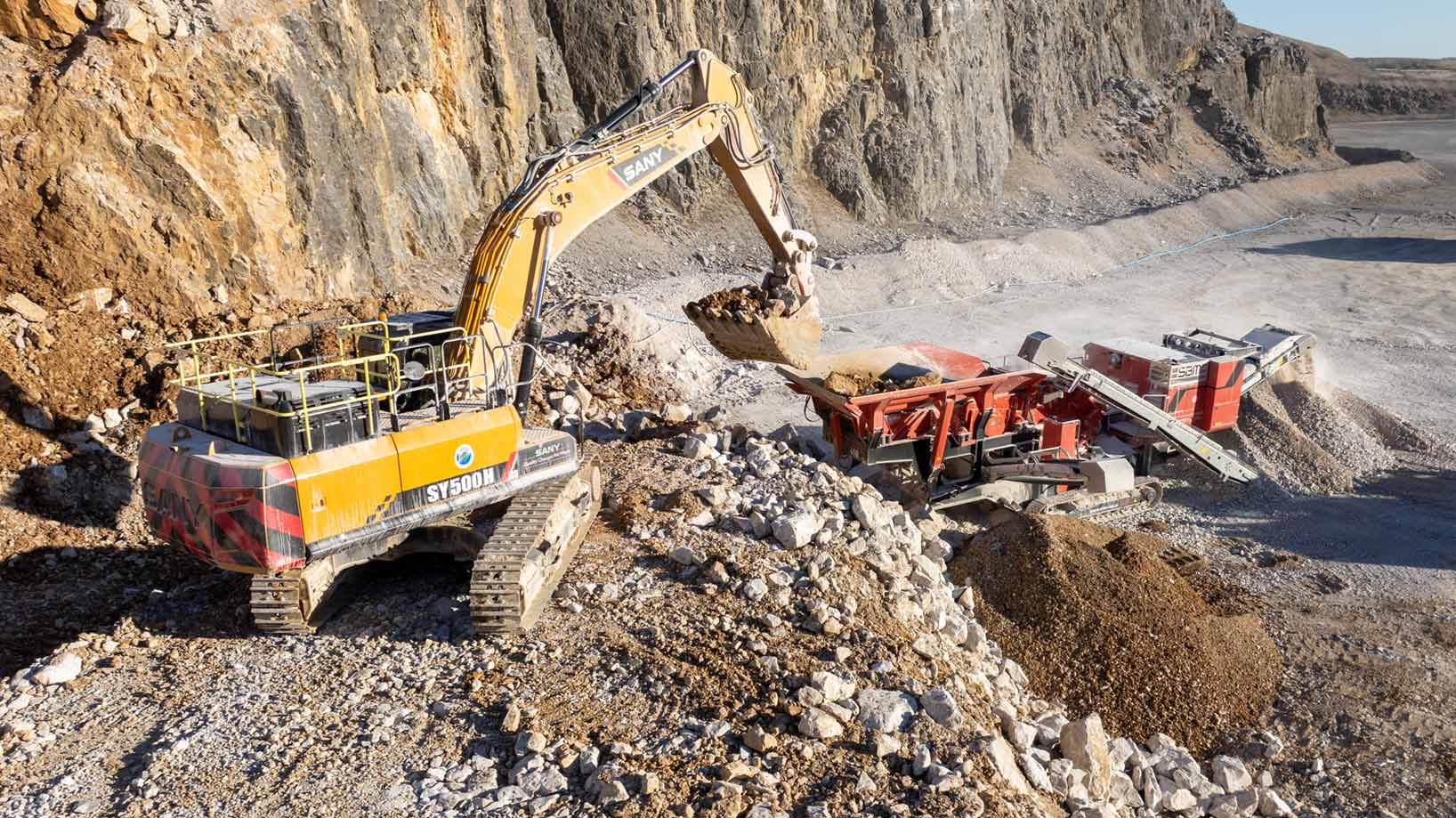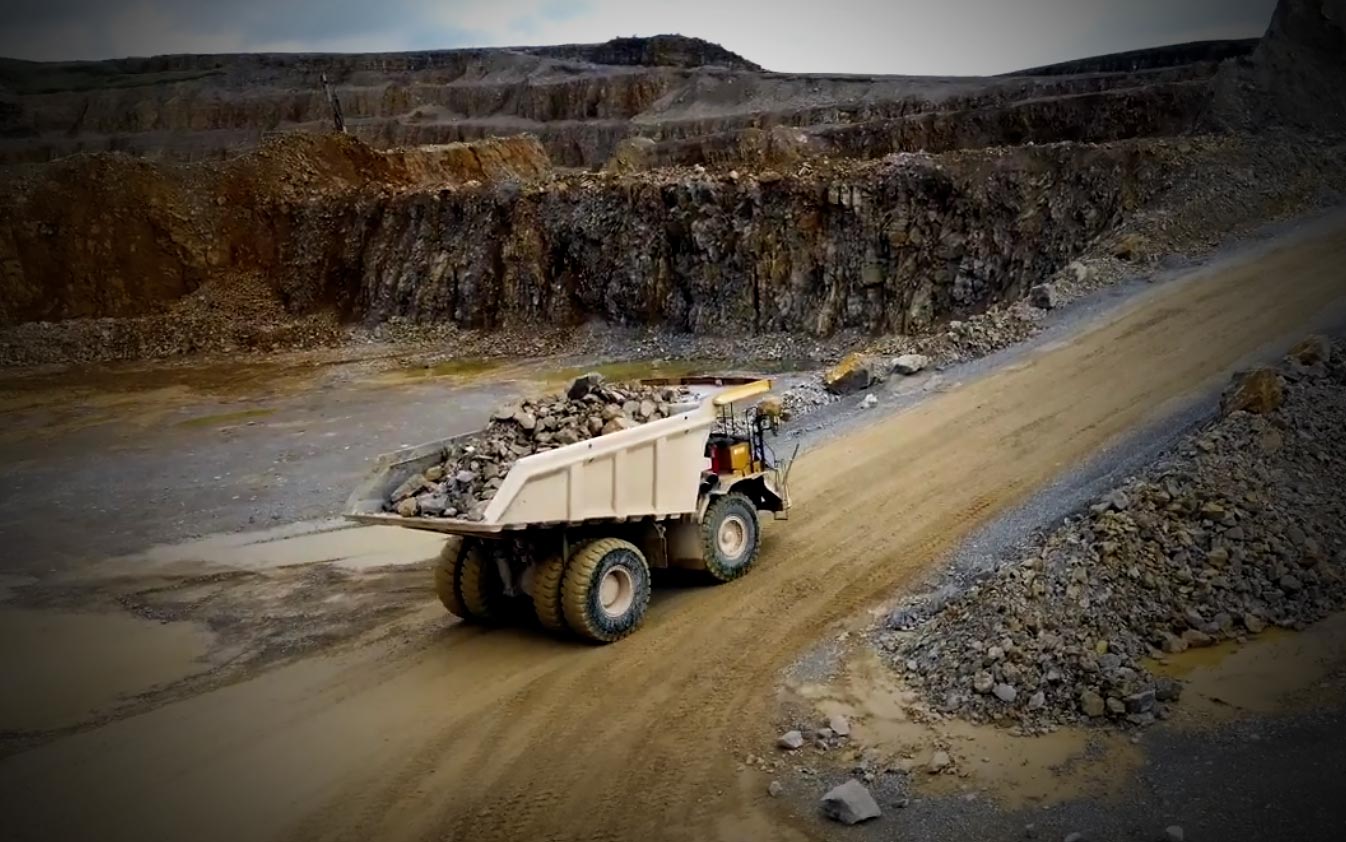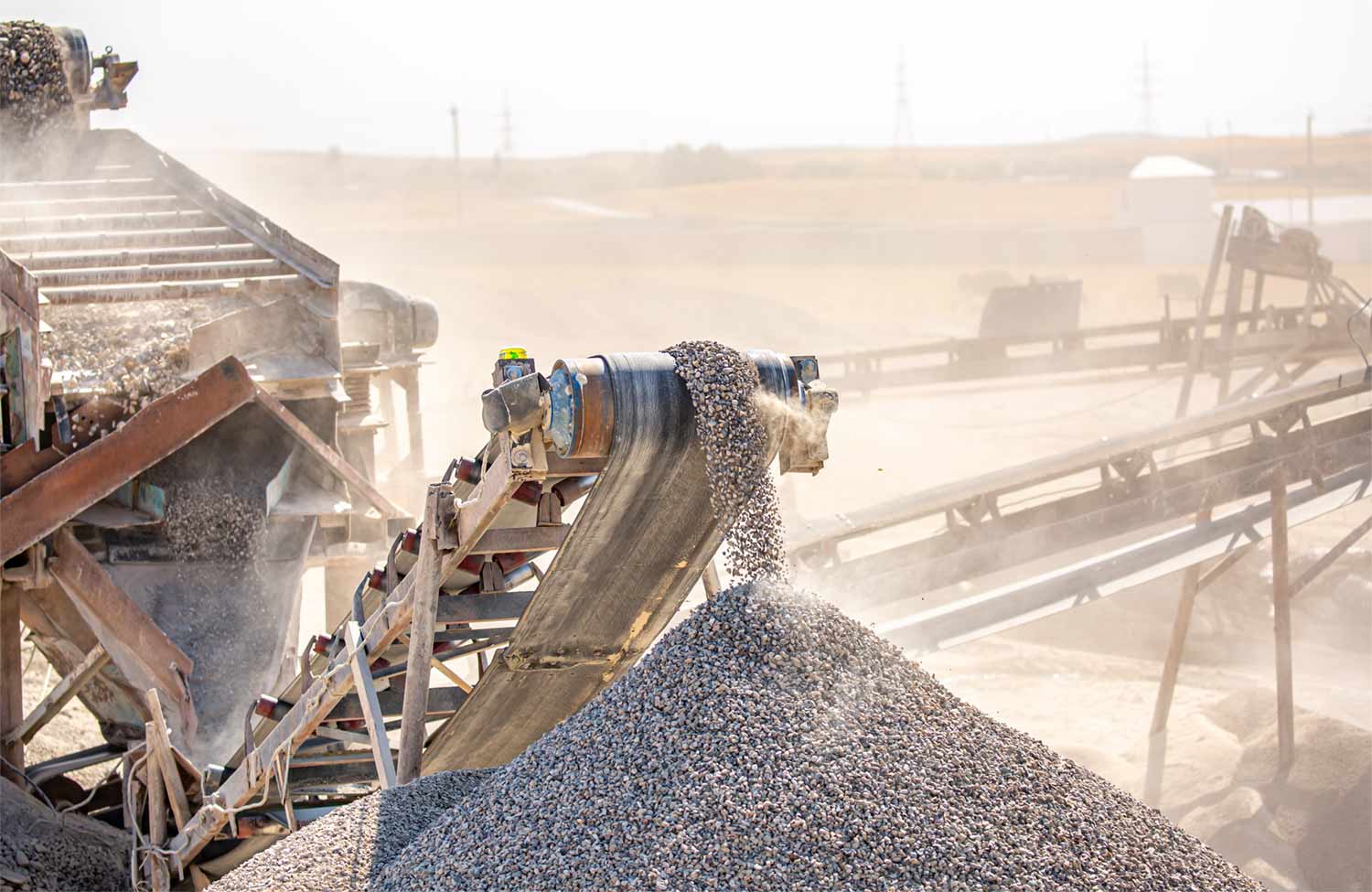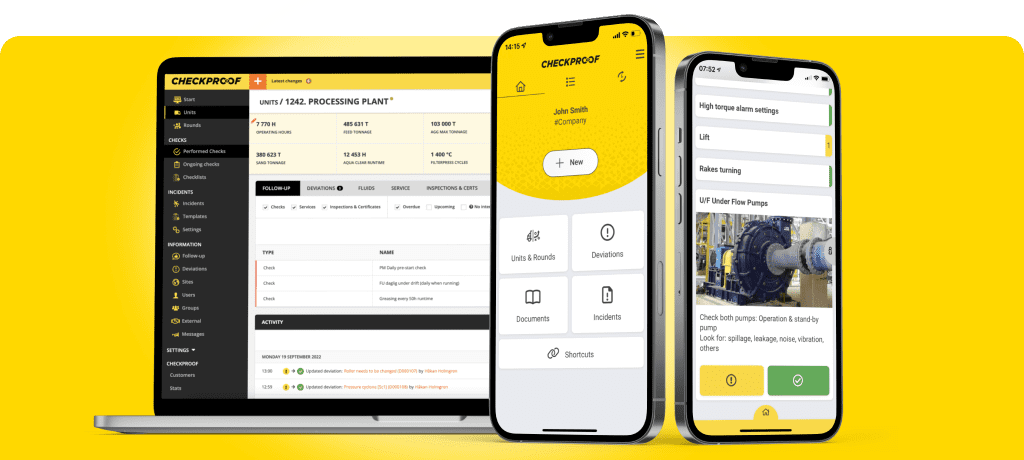Join us at AGG1, St Louis, MO - America's Center Convention Complex: 25-27 March
Discover how you can reduce unplanned downtime across your heavy industry sites through a proactive approach to asset maintenance.
To run a profitable business, you need to optimize the use of critical resources such as equipment, energy, and manpower. One of the most important elements of resource optimization in heavy industries is downtime reduction. The key to success? Proactivity.
How to improve your downtime reduction strategy through preventive maintenance
The most effective downtime reduction strategy is catching potential issues before they cause major breakdowns. To succeed, you need to implement a preventive maintenance regime. Below, you’ll find six ways to become more proactive in your asset management (and how to use digital technology to boost your results).
1. Stay on top of your servicing schedule
To reduce unplanned downtime, you need to make the most of your planned downtime.
Timely servicing your critical assets is crucial for staying on top of your routine maintenance and will get rid of the most basic faults.
Much too often, servicing is put off until the last minute – or even after it’s overdue. This will prematurely wear out your equipment, causing it to break down mid-production. Delaying your servicing can also cause warranty issues with your OEM.
How tech helps:
Use a digital maintenance platform or CMMS to plan your important servicing tasks before their due date. Schedule them at a time when they’ll have minimum impact on your production. You can also set up automatic email reminders counting down to the event. This helps you prepare properly and make optimal use of this window of planned downtime.
By digitally logging your servicing efforts, you’ll also be able to prove to the OEM that you’ve lived up to your part of the warranty agreement in case there’s a malfunction later on.
2. Base your maintenance routines on actual usage (not random time intervals)
Let’s say your maintenance schedule requires a certain machine or piece of equipment to be checked once a week. But some weeks it won’t have been used much at all, while at other times, it may have been operated during double shifts. This means some of your scheduled checks will be a waste of valuable time. Other inspections will instead come too late, which means you risk failing to detect a potential breakdown in time to prevent it.
How tech helps:
With a digital platform, you can set up your maintenance tasks to be triggered by usage, instead of a predetermined number of days. For example, greasing a piece of equipment after 60 hours of running time makes your maintenance a lot more accurate than simply doing it every week.
3. Monitor data from a multi-brand fleet in a single place
You can improve the accuracy of your maintenance routines even further by basing them on more detailed parameters monitored through telematics and IoT. These values can include temperature, pressure, fuel levels, and more.
To gather this information, and use it to trigger maintenance tasks, you need to stream data from sensors and software provided by the manufacturer. But with a diverse fleet of machines and vehicles from several OEMs, your data risks being scattered and difficult to overview.
How tech helps:
By choosing a CMMS that offers integrations with a wide range of OEMs, you can monitor a multi-brand fleet in a single platform, which provides a full view of your assets’ performance. This also enables you to create triggers for usage-based maintenance tasks in the same platform, without frontline operators having to log into a different app for each machine.
4. Discard pen and paper once and for all – including the frontline
Have you ever tried to decipher notes hastily written down on a piece of paper at a muddy plant by someone whose handwriting leaves a great deal to be desired? Or struggled to guess exactly which part of your equipment a report refers to since different employees or contractors use different terminology? It’s like Chinese whispers but in writing.
And once the paper reports are handed in, are your site managers still collecting them in a pile on their desk, only to painstakingly enter the same information (if they can read it) into a spreadsheet on their computer? Sorry to break it to you, but this inefficient procedure doesn’t count as “going digital”.
Letting frontline staff fill out their reports on paper also limits the amount of detail they can include. This prevents them from explaining a complex issue properly, which in turn leads to mistakes in the actions taken to correct it. Down the line, this can cause costly delays in repairs – and stall your production for much longer than necessary.
How tech helps:
By switching to a mobile-first platform, you’ll allow frontline operators to add as much detail as they need, including photos and video recordings. Because a picture really does say more than a thousand words (and at a fraction of the time).
You can also minimize manual typing and ensure a unified terminology by setting up your digital report forms in stages with the help of dropdown menus. The operator selects from pre-set options to gradually drill down to the specific part they need to check. For example, a click path could be: Wheel loader > Wheels > Front left wheel > Wheel hub > Wheel nuts.
This structure is especially helpful if you rely on temporary staff or external contractors to operate your sites.
5. Enable instant reporting straight from the field
Letting frontline staff fill out paper forms makes them more likely to wait until the end of the day, or week, before handing in their report. And, as you know, a minor issue on Monday can easily turn into a major problem by Friday.
How tech helps:
A mobile app lets your frontline staff submit deviation reports instantly, directly from the field – before they have a chance to forget important details. “But what if there’s no connection?” you might say. In that case, a solid offline mode feature will save the day. The report they’ve prepared will be submitted as soon as the operator reaches a spot with connectivity.
6. Don’t forget to follow up on non-emergency issues
As important as inspections and fault-logging are, they’re not much use if no one takes action on the issues reported. While acute problems are dealt with right away out of necessity, the non-emergency ones tend to fall through the cracks. Until eventually – like a slow puncture – they grind your entire operations to a halt.
How tech helps:
Make sure your CMMS enables you to monitor issues over time, assign a responsible person, and set deadlines for resolving and/or following up. Ideally, there’s also a “follow” feature that allows internal stakeholders to get notified of any updates on issues that concern them.
Step by step to full digitalization
If your company is just starting to digitize your routines and documentation, all this might seem overwhelming. But Rome wasn’t built in a day. Start by setting up a basic structure and add more detailed checks along the way. You’ll soon see results in the form of less unplanned downtime, reduced repair costs, and improved productivity.
At CheckProof, we’ve helped many companies in sectors such as aggregates, cement, and asphalt transition from inefficient routines and reporting to streamlined operations. Want to know what we can do for you? Simply contact us today to discuss your needs – or book a 30-minute demo of our mobile-first platform.
Want to know what CheckProof can do for you?
CheckProof's easy-to-use app makes it easier to do the right thing at the right time. Discover how you can run world-class maintenance that is both cost-effective and sustainable.

Maximize Efficiency with an OEE Monitoring System

Plant Asset Management Software:Maximizing Equipment Uptime

Machine Downtime Tracking: The key to smarter, more efficient operations

CMMS Software: What it is and why it’s key to First-Class Maintenance Operations

Revolutionizing Compliance: Banner Contracts on managing ISO audits with CheckProof

Implementation of Digital Systems: Rolling Out CheckProof Across Teams

From Fuel Savings to Production Gains: Cemex Germany’s Wins with CheckProof

A Recap of the CheckProof Industry Event & 10th Anniversary Celebration

Trend Report: Key moments in the Construction Materials industry (2014–2024)




